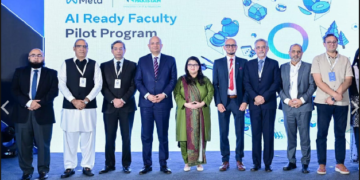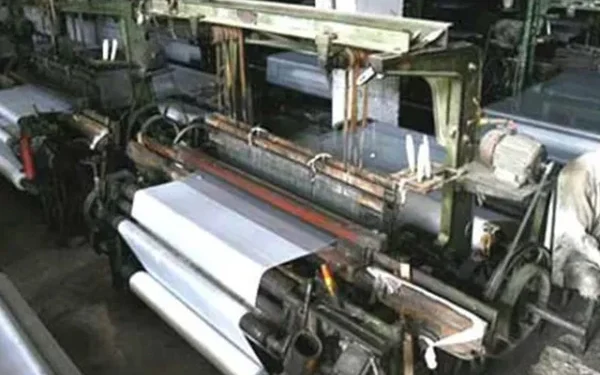Islamabad — The State Bank of Pakistan (SBP) has expressed serious concerns over the sluggish progress in the rehabilitation and restructuring of sick industrial units in the country. In a recent report submitted to the federal government, the SBP pointed out two primary reasons behind the persistent delays: the slow judicial process and the lack of new financial resources. These obstacles, the report warns, are pushing struggling industries deeper into financial distress.
The findings of the SBP’s report come at a crucial time, as Pakistan’s industrial sector faces mounting challenges due to global economic headwinds, inflation, and limited access to affordable financing.
Overview of Sick Industrial Units in Pakistan
Sick industrial units refer to manufacturing or production facilities that are unable to generate sufficient revenue to meet their operational costs, loan repayments, or investment returns. These businesses typically operate below capacity or have halted operations altogether due to cash flow problems, technological obsolescence, or mismanagement.
Over the past two decades, the number of such units in Pakistan has steadily grown, particularly in key sectors such as textiles, engineering, cement, and steel. Despite various government-backed restructuring schemes, the recovery of these units has remained slow and inconsistent.
Judicial Delays Undermining Rehabilitation Efforts
One of the most critical concerns raised by the SBP in its report is the inefficiency of the judicial system in resolving financial and contractual disputes related to sick industrial units. Legal proceedings related to debt settlements, liquidation, and bankruptcy often stretch over several years.
“The lengthy litigation process in commercial courts discourages both creditors and investors from engaging in restructuring agreements,” the report noted.
Due to delayed adjudication, banks are unable to enforce securities or resolve disputes in a timely manner. This legal uncertainty significantly undermines the confidence of financial institutions, delaying decisions to provide new credit or approve restructuring packages.
Lack of Financial Resources and Bank Reluctance
Apart from the legal bottlenecks, the unavailability of fresh financial resources is another pressing issue. Financial institutions are reluctant to extend new credit to units already under stress, fearing that such loans may turn into additional non-performing loans (NPLs).
Moreover, banks operate under strict prudential regulations and are not authorized to write off loans without regulatory and shareholder approval. This restriction discourages them from offering debt forgiveness or haircuts — a key component in most successful restructuring efforts.
The SBP report emphasizes that the inability of banks to clean up their balance sheets from long-standing bad loans further discourages them from supporting the rehabilitation of sick units.
Historical Context: Non-Performing Loans (NPLs) Still High
Despite a marginal improvement in 2024, the volume of non-performing loans remains high by historical standards. The report provides a historical overview of Pakistan’s NPL situation:
- In 2006, NPLs stood at Rs 177 billion.
- By 2012, this figure had surged to Rs 618 billion.
- There was a slight decrease, with NPLs stabilizing at Rs 605 billion during 2014–2015.
During this same period, the Karachi Interbank Offered Rate (KIBOR) — a key benchmark for commercial lending — also saw significant fluctuations. It peaked at 14.2% in 2008, a reflection of tight monetary conditions, and dropped to 6.8% by 2015, making loans relatively cheaper but still not enough to reverse the industrial slowdown.
SBP’s Proposed Guidelines for Revival and Restructuring
To address the current crisis, the SBP has introduced new guidelines aimed at empowering banks and Development Finance Institutions (DFIs) to actively support the rehabilitation of sick industrial units. Key features of the proposed policy framework include:
1. Debt Restructuring Authorization
Banks will now be allowed to:
- Restructure outstanding loans.
- Revise interest rates.
- Extend loan tenures.
- Offer grace periods or partial write-offs (subject to approval).
2. Revival Financing
Lenders can provide fresh working capital or project loans under the revival plan, provided the unit demonstrates the potential to become viable under the revised terms.
3. Balance Sheet Optimization
By rehabilitating viable units, banks can convert non-performing loans into performing assets, thereby cleaning up their balance sheets and improving capital adequacy ratios.
4. Enhanced Monitoring Mechanisms
Revived units will be subject to periodic performance reviews to ensure compliance with business and financial restructuring terms.
Importance of Policy for Economic Revival
Experts argue that the successful rehabilitation of sick industrial units can have a multiplier effect on Pakistan’s economy:
- Job Creation: Resurrected factories can re-employ skilled labor, reducing unemployment.
- Exports: Revived manufacturing units, especially in textiles, can help increase export revenues.
- Tax Revenues: Functioning businesses contribute to the national exchequer through taxes and duties.
- Supply Chain Resilience: A robust industrial base strengthens backward and forward linkages in supply chains.
Challenges Ahead: Need for Institutional Reforms
While the SBP’s initiative is a step in the right direction, structural challenges remain. Legal reforms are urgently needed to fast-track commercial disputes. The establishment of special economic courts or bankruptcy tribunals has long been recommended but not yet implemented.
Additionally, capacity building within banks is essential. Financial institutions must be equipped with the tools and training required for evaluating and implementing revival plans, which often involve complex financial modeling and legal arrangements.
Public-Private Collaboration Needed
The government must also foster greater public-private partnerships to support industrial revival. This includes offering fiscal incentives such as tax holidays or subsidies for units undergoing rehabilitation and promoting technical assistance programs through institutions like the Pakistan Industrial Technical Assistance Centre (PITAC).
Moreover, investment promotion bodies can work to attract foreign investors and joint ventures willing to inject capital into struggling yet potentially profitable units.
Conclusion: A Critical Juncture for Pakistan’s Industrial Health
The SBP’s report serves as a wake-up call for policymakers, banks, and the judiciary alike. With many industrial units at the brink of collapse, delays in restructuring and rehabilitation could result in long-term damage to Pakistan’s industrial base.
A multi-pronged strategy involving legal reform, financial innovation, institutional support, and investor confidence is urgently needed. The success of this initiative could serve as a blueprint for broader economic revival, helping Pakistan chart a more resilient and sustainable path to industrial development.

























